Russia
Welcome to Russia
Russia-spanning two continents and 11 time zones-is a destination that stirs the imagination. Onion-domed cathedrals, imperial palaces, endless forests, and vibrant cities await those ready to explore the world’s largest country. Whether you’re drawn by its rich culture, dramatic landscapes, or legendary hospitality, Russia in 2025 is more accessible and rewarding than ever.
Russia’s allure lies in its contrasts: from the cosmopolitan buzz of Moscow and St. Petersburg to the wild beauty of Lake Baikal and the Caucasus mountains. It’s a country where tradition and innovation intertwine, where you can experience both the grandeur of imperial history and the dynamism of modern life. Despite global changes, Russia remains open to travelers, offering a wealth of experiences for every interest and budget.
Why Visit Russia in 2025?
1.
Unparalleled Diversity: Russia’s sheer size means you can experience everything from Arctic tundra and subtropical beaches to ancient villages and futuristic skylines-all in one trip.
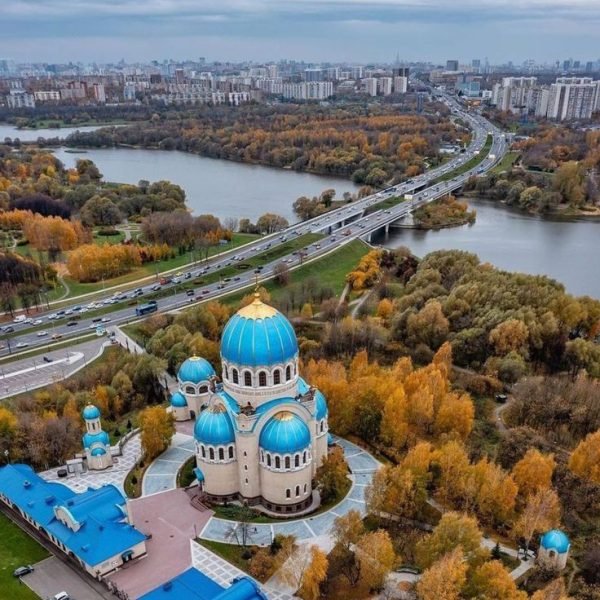
2.
Rich Cultural Heritage: Home to world-class museums, ballet, and literature, Russia is a treasure trove for culture lovers. Iconic events like the White Nights Festival and Moscow’s International Film Festival add extra sparkle to your visit.

Planning Your Trip
Visa Information
Most visitors require a visa to enter Russia. In 2025, both traditional and electronic visas are available, making the process smoother than in previous years. Start your application early, as processing times can vary. You’ll need a valid passport, an invitation (often provided by hotels or tour agencies), and travel insurance. Agencies like Nihosi Travels and Tours can assist with the paperwork, ensuring a hassle-free experience.
Best Time to Visit
- May to October: This is the most popular period, offering pleasant weather for city explorations, river cruises, and nature trips. Summers are vibrant, with long days and numerous festivals-especially in St. Petersburg during the White Nights (June–July).
- Winter (November–March): For those seeking a true Russian winter, this season transforms cities into snowy wonderlands. It’s perfect for winter sports, visiting the ballet, or experiencing traditional Russian saunas (banyas).
Getting To and Around
Getting to Russia
Major international airports in Moscow and St. Petersburg serve as gateways for most travelers. Direct flights from Europe, Asia, and the Middle East are common, though some routes may be affected by ongoing global changes. Booking in advance is recommended, and it’s wise to check for any travel advisories or airline updates before departure.
Getting Around
- Trains: Russia’s vast railway network is legendary. High-speed trains connect Moscow and St. Petersburg in under four hours, while the Trans-Siberian Railway offers an epic journey across the country. Luxury train experiences, like the Golden Eagle, are gaining popularity for those seeking comfort and adventure.
- Domestic Flights: For covering long distances quickly, domestic flights are efficient and widely available.
- Metro Systems: Moscow and St. Petersburg boast ornate and reliable metro systems-an attraction in themselves. They’re the fastest way to navigate these sprawling cities.
- Taxis and Ride-Sharing: Services like Yandex.Taxi are widely used in urban areas. Always use official apps or hotel-recommended taxis for safety and convenience.
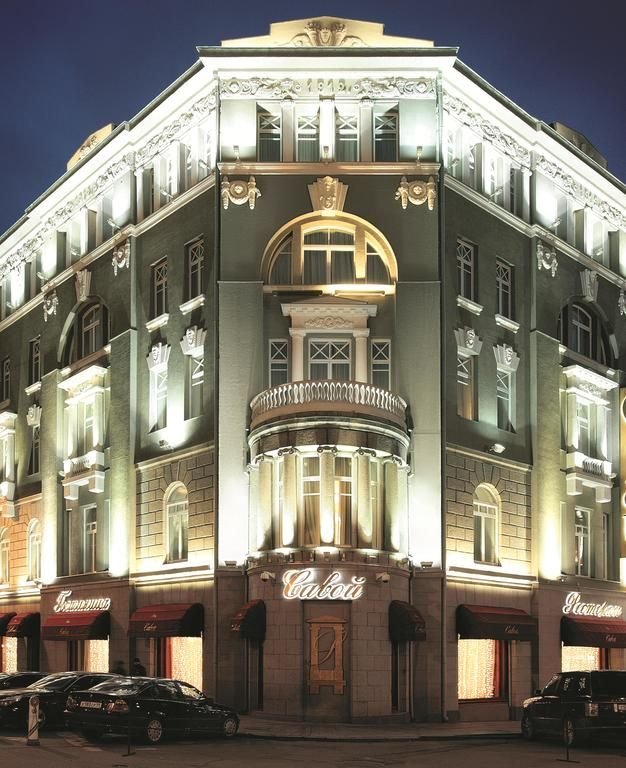
Accommodation
Russia offers a wide range of accommodation options to suit every traveler’s budget and preference, from affordable hostels and mid-range hotels to luxurious five-star resorts.
Budget and Mid-Range Hotels
For travelers seeking value, cities like Moscow and St. Petersburg feature numerous budget hotels and guesthouses with clean, comfortable rooms and convenient locations. Chains such as Ibis and Marriott Courtyard provide reliable mid-range options with modern amenities, often close to major attractions and metro stations. In resort areas like Sochi and Gelendzhik, you can find charming guesthouses and 3- to 4-star hotels offering cozy stays near the sea or mountains.
Luxury Hotels
Russia boasts many luxury hotels, especially in Moscow, St. Petersburg, and popular resort regions. Some top-rated five-star hotels include the historic Hotel Metropol and Grand Hotel Europe in Moscow, the elegant Four Seasons Lion Palace in St. Petersburg, and the Rixos Krasnaya Polyana in Sochi. These hotels combine opulent interiors, impeccable service, and prime locations. Many offer all-inclusive packages, spa facilities, fine dining, and stunning views of city landmarks or natural scenery.
Unique Stays
For a more authentic experience, consider boutique hotels or guesthouses in historic towns of the Golden Ring or remote areas like Solovetsky Island. These often feature traditional Russian decor and personalized service, giving insight into local culture and hospitality.
Booking Tips
Use popular online platforms to compare prices, read reviews, and book in advance, especially during peak seasons or festivals. Many hotels provide free breakfast and shuttle services. In cities, proximity to metro stations is a key convenience factor.
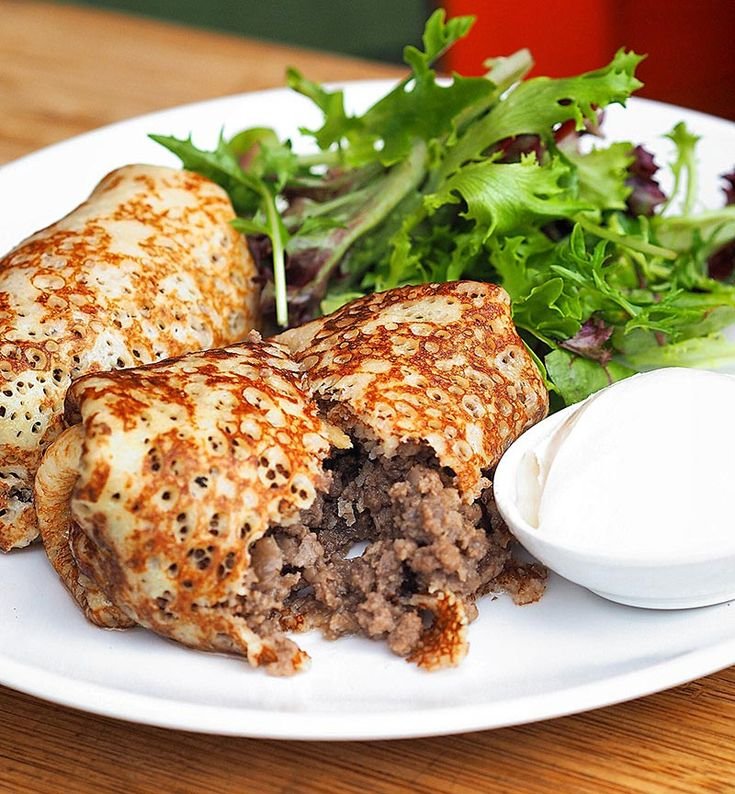
Food and Drink
Russian cuisine is hearty, diverse, and deeply rooted in tradition, offering travelers a delicious window into the country’s culture.
Traditional Russian Dishes
Start with classics like borscht (beet soup), pelmeni (meat dumplings), and blini (thin pancakes often served with sour cream, caviar, or jam). Shchi (cabbage soup) and beef stroganoff are also popular. In winter, warming dishes like solyanka (spicy meat soup) and kasha (porridge) are favorites.
Street Food and Snacks
In cities, you’ll find vendors selling pirozhki (stuffed buns), chebureki (fried turnovers), and kvass (a mildly fermented bread drink). Markets and food halls offer fresh produce, smoked fish, and local cheeses.
Drinks
Vodka is Russia’s iconic spirit, traditionally enjoyed neat and accompanied by zakuski (small appetizers). For non-alcoholic options, try kvas, mors (berry juice), or rich Russian tea served with lemon and jam. Coffee culture is growing, with many cafes offering artisanal brews alongside traditional teas.
Dining Experiences
- Cafés and Bistros: Casual spots serve hearty meals at affordable prices, ideal for quick lunches or sampling local flavors.
- Fine Dining: Major cities have a thriving restaurant scene with chefs reinventing Russian classics and offering international cuisine. Expect elegant settings and extensive wine lists.
- Home Cooking: Some travelers opt for home-hosted meals or cooking classes to experience authentic Russian hospitality firsthand.
Tipping and Etiquette
Tipping around 10% in restaurants is customary and appreciated. Russians value politeness and formality, so a simple “spasibo” (thank you) goes a long way.
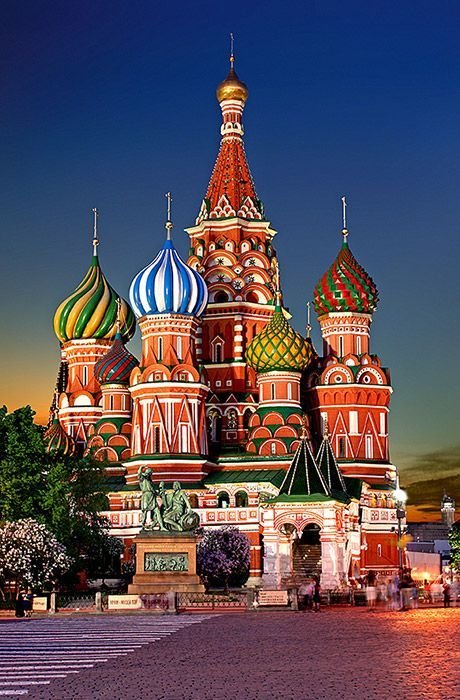
Must-See Attractions
Russia is a land of immense history, culture, and natural beauty, offering a wealth of iconic attractions that captivate every traveler. Here are some of the top must-see sights in 2025:
Red Square, Moscow
The heart of Russia’s capital, Red Square is surrounded by stunning landmarks including the colorful onion domes of Saint Basil’s Cathedral, the imposing walls of the Kremlin, and Lenin’s Mausoleum. This historic plaza is not only a symbol of Russia’s rich past but also a vibrant gathering place with cultural events, scenic walks, and dining options. Visiting at night reveals a magical atmosphere as the buildings are beautifully illuminated.
The Kremlin, Moscow
A UNESCO World Heritage site, the Kremlin is a fortified complex featuring palaces, cathedrals, and government offices. Visitors can explore the Armoury Chamber, which houses royal treasures and ancient weaponry, and marvel at the architectural grandeur of the cathedrals within its walls.
State Hermitage Museum, St. Petersburg
Housed in the magnificent Winter Palace, the Hermitage is one of the world’s largest and oldest museums. It boasts over 3 million works of art, including masterpieces by Leonardo da Vinci, Rembrandt, and Van Gogh. The lavish interiors and vast collections make it a paradise for art lovers.
Church of the Savior on Spilled Blood, St. Petersburg
This stunning church, built on the site of Emperor Alexander II’s assassination, is famous for its intricate mosaics and colorful domes. Its richly decorated interior and historical significance make it a must-visit.
Peterhof Palace, near St. Petersburg
Often called the “Russian Versailles,” Peterhof is renowned for its grand palaces, elegant gardens, and spectacular fountains. The Grand Cascade and the Sea Channel are breathtaking sights, showcasing the opulence of imperial Russia.
Lake Baikal, Siberia
The world’s deepest freshwater lake, Lake Baikal offers pristine natural beauty and unique wildlife, including the rare Baikal seal. Visitors can hike, boat, or in winter, enjoy ice skating and dog sledding across the frozen lake.
Kazan Kremlin, Kazan
This historic fortress blends Russian and Tatar cultures, featuring the beautiful Qol Sharif Mosque and the Annunciation Cathedral. It offers a fascinating glimpse into the diverse heritage of the region.
Sochi
Russia’s premier Black Sea resort city, Sochi is famous for its beaches, ski resorts, and vibrant nightlife. It hosted the 2014 Winter Olympics and offers year-round outdoor activities from mountain hiking to water sports.
Kizhi Island, Karelia
An open-air museum showcasing traditional wooden architecture, including the famous Church of the Transfiguration with its 22 domes built without nails. The peaceful lake setting adds to its charm.
Kamchatka Peninsula
For adventure seekers, Kamchatka offers volcanoes, geysers, hot springs, and abundant wildlife. Helicopter tours provide stunning aerial views of this wild and remote region.
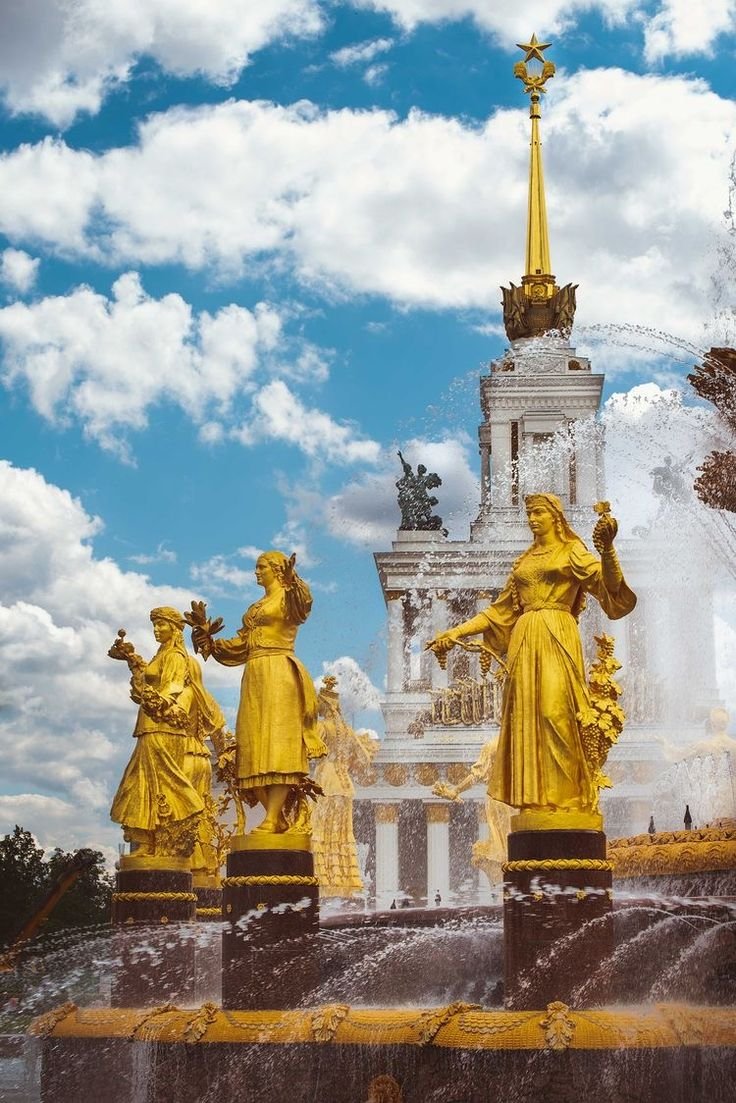
Must-Do Activities
Exploring Russia is about more than just sightseeing; it’s about immersing yourself in its culture, history, and natural wonders. Here are essential activities to include in your 2025 itinerary:
- Ride the Trans-Siberian Railway
Experience the world’s longest railway journey, crossing eight time zones from Moscow to Vladivostok or Beijing. This epic trip offers unparalleled views of Russia’s diverse landscapes-from vast forests and mountains to remote villages-and a chance to meet locals along the way. - Explore the Moscow Metro
More than just a transit system, Moscow’s metro is an underground art gallery. Stations are adorned with chandeliers, mosaics, and sculptures, reflecting Soviet-era grandeur. Take a self-guided tour to appreciate the architecture and history. - Attend a Ballet or Opera Performance
Russia’s performing arts are world-renowned. Catch a show at the Bolshoi Theatre in Moscow or the Mariinsky Theatre in St. Petersburg for a night of exquisite ballet or opera in stunning historic venues. - Walk Along Nevsky Prospekt, St. Petersburg
The city’s main avenue is lined with shops, cafes, and historic buildings. It’s perfect for people-watching, sampling local cuisine, and soaking in the vibrant urban atmosphere. - Visit a Russian Banya (Sauna)
Experience a traditional Russian steam bath, a social and cleansing ritual involving steam, birch branches, and cold plunges. It’s a unique way to relax and connect with local culture. - Cruise the Moskva or Neva Rivers
Boat tours provide a fresh perspective on Moscow’s and St. Petersburg’s landmarks. Evening cruises are especially enchanting when city lights reflect on the water. - Explore the Golden Ring
This circuit of ancient towns northeast of Moscow is dotted with medieval churches, kremlins, and wooden architecture. Towns like Suzdal and Vladimir offer a peaceful glimpse into Russia’s past. - Sample Russian Cuisine
Beyond sightseeing, indulge in hearty Russian dishes like borscht, pelmeni, and blini at local markets, cafes, or home-hosted meals. Don’t miss trying traditional drinks like kvass and medovukha (honey mead). - Winter Sports and Activities
In winter, try skiing or snowboarding in Sochi’s mountains, ice skating on frozen lakes, or dog sledding in Siberia. The snowy landscapes create a magical setting for outdoor adventure. - Discover Russian Art and History Museums
Besides the Hermitage, visit the State Tretyakov Gallery in Moscow for Russian art, the Fabergé Museum in St. Petersburg for exquisite jeweled eggs, and the Museum of Cosmonautics for a fascinating look at Russia’s space achievements.
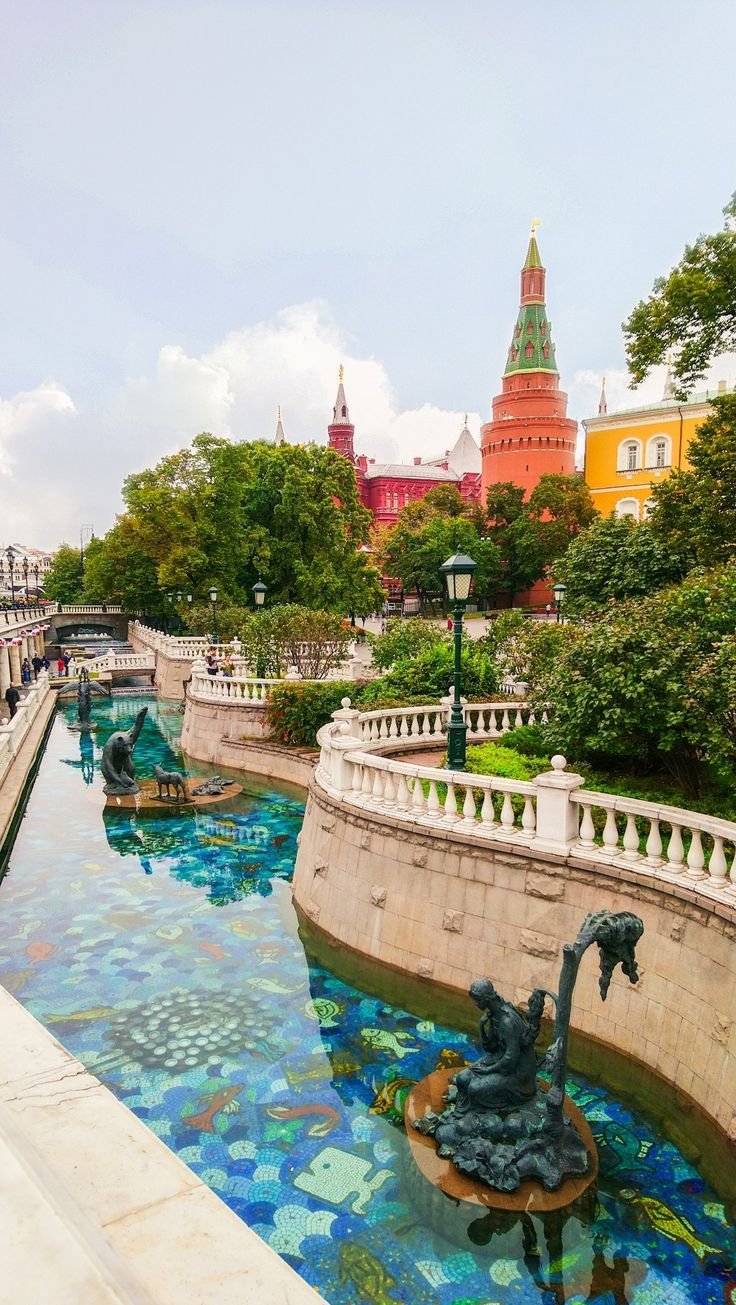
Travel Tips
Traveling to Russia in 2025 promises unforgettable experiences, but being prepared with practical knowledge will help ensure your trip is safe, enjoyable, and culturally rewarding. Here’s what you need to know before you go.
Safety Advice
General Safety
Russia is generally safe for tourists, especially in major cities like Moscow, St. Petersburg, and Sochi. Violent crime against foreigners is rare, but petty theft and scams can occur, particularly in crowded tourist areas, public transport, and markets. Always keep your valuables secure, avoid displaying expensive items, and be vigilant in busy places.
Pickpocketing and Scams
Pickpocketing is the most common crime targeting visitors. Use anti-theft bags, keep wallets in front pockets, and avoid being distracted by strangers. Taxi scams are also an issue; only use official taxi apps like Yandex.Taxi or Uber, or have your hotel arrange a ride. Never accept rides from unmarked taxis or negotiate with drivers at airports and stations.
Credit Card Safety
Credit card fraud can happen, especially at standalone ATMs or with unreliable merchants. Use ATMs inside banks, cover your PIN, and monitor your statements for suspicious charges.
Water and Food
Tap water is not recommended for drinking in most Russian cities; opt for bottled or filtered water. Hotels often provide safe drinking water. Use bottled water for brushing teeth if you have a sensitive stomach. Be cautious with street food and avoid consuming alcohol from unknown or unlabelled sources.
Personal Safety
Avoid walking alone late at night, especially in unfamiliar neighborhoods. Stick to well-lit, populated areas. If you’re approached by police, always ask for identification. Carry your passport, migration card, and hotel registration at all times, as random checks are common.
Terrorism and Political Unrest
While most tourist areas are stable, be aware of the global risk of terrorism. Avoid large gatherings, demonstrations, and border regions near Ukraine or the North Caucasus, which can be unstable. Stay updated with local news and follow any instructions from authorities.
Weather Preparedness
Russian weather can be extreme, especially in winter. Pack appropriate clothing-layers, a warm coat, hat, gloves, and sturdy shoes. Even in spring and autumn, temperatures can drop suddenly, so check forecasts before traveling.
Solo and Female Travelers
Russia is generally safe for solo travelers, including women. Dress modestly, especially at religious sites, and use ride-hailing apps at night. Catcalling can occur; ignoring it is often the best response. Choose well-reviewed accommodations and avoid isolated areas after dark.
Local Customs
Politeness and Formality
Russians value politeness and formality, especially with strangers. Greet people with a firm handshake and direct eye contact. Address people using their first name and patronymic (father’s name) if possible, especially in formal situations.
Dress Code
Dress is generally conservative, especially in smaller towns and religious sites. In churches and monasteries, women should cover their heads and wear modest clothing; men should remove hats and avoid shorts.
Social Etiquette
- Remove your shoes when entering a Russian home; slippers are usually provided.
- Bringing a small gift (flowers, chocolates) when visiting someone’s home is appreciated.
- Avoid discussing politics or criticizing the country, especially with people you don’t know well.
Public Behavior
Public displays of affection are uncommon. Speaking loudly, especially in public transport, is frowned upon. Drinking alcohol in public places is illegal and can attract fines.
Tipping
Tipping is customary in restaurants (around 10%), cafes, and for taxi drivers. It’s not mandatory but is appreciated for good service.
Language Basics
Russian is the official language, and while English is becoming more common in major cities, it’s still limited outside tourist hotspots. Learning a few basic phrases will greatly enhance your experience and help you connect with locals.
Essential Phrases
- Hello: Zdravstvuyte (zdrah-stvooy-tyeh)
- Thank you: Spasibo (spah-see-bah)
- Please: Pozhaluysta (pah-zhahl-oos-tah)
- Yes/No: Da / Net
- Excuse me / Sorry: Izvinite (eez-vee-nee-tyeh)
- Do you speak English?: Vy govorite po-angliyski? (vih gah-vah-ree-tyeh pah ahn-GLEES-kee)
- How much is this?: Skol’ko eto stoit? (skol-kah eh-tah stoy-eet)
- Where is…?: Gde…? (gdyeh)
- Help!: Pomogite! (pah-mah-GEE-tyeh)
Tips for Communication
- Download a translation app or carry a phrasebook.
- Signs in tourist areas are often bilingual, but in smaller towns, Russian is the norm.
- Speaking slowly and using gestures can help bridge language gaps.
Final Tips for a Smooth Journey
- Register your stay with your hotel or host within 24 hours of arrival.
- Carry copies of important documents and keep originals in a safe place.
- Have travel insurance covering medical emergencies and theft.
- Respect local customs, stay informed, and keep an open mind-Russians are proud of their culture and often eager to help visitors.
With these tips, you’ll be well-prepared to enjoy Russia’s rich history, vibrant cities, and warm hospitality safely and respectfully.

